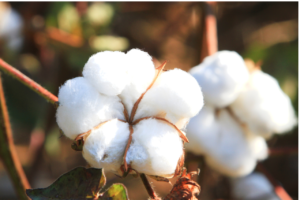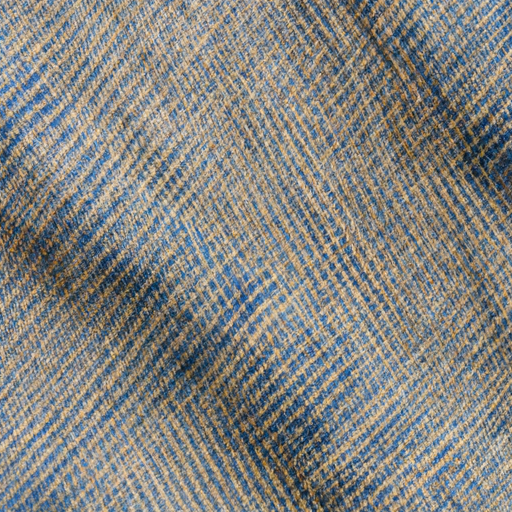When it comes to sustainable outdoor clothing, choosing the right materials is crucial. Not only do you want your gear to be durable and functional, but you also want it to have a minimal impact on the environment. In this article, we will explore some of the best materials for sustainable outdoor clothing, highlighting their eco-friendly qualities and how they contribute to a more responsible and ethical approach to outdoor apparel. From recycled fibers to organic fabrics, discover the options that align with your values while still keeping you comfortable and protected during your outdoor adventures.
Sustainable Outdoor Clothing Materials
Cotton

Cotton is a versatile and popular fabric choice for sustainable outdoor clothing. It offers a variety of benefits that make it a great option for eco-conscious consumers like you. One of the main advantages of cotton is its breathability, allowing air to flow through the fabric and keeping you cool and comfortable during outdoor activities. Cotton is also known for its softness and comfort against the skin, making it a popular choice for those with sensitive skin.
In terms of environmental impact, cotton has both positive and negative aspects. On the positive side, cotton is a natural and renewable resource, making it a sustainable choice. It is biodegradable and can break down in soil, reducing waste in landfills. Additionally, cotton production requires less energy and water compared to synthetic fibers, further reducing its environmental footprint.
However, it is worth noting that conventional cotton farming practices can have negative environmental consequences. Pesticides and insecticides are commonly used in cotton cultivation, which can harm biodiversity and contaminate water sources. To mitigate these impacts, it is advisable to opt for organic cotton, which is grown without the use of harmful chemicals.
When considering cotton for sustainable outdoor clothing, it is important to note that it may not perform as well as synthetic materials in terms of moisture-wicking and quick drying properties. Cotton tends to absorb and retain moisture, which can make it less suitable for intense outdoor activities or wet conditions. However, for less strenuous activities or cooler climates, cotton can still be a comfortable and sustainable choice for your outdoor wardrobe.
Hemp

Hemp is another excellent option for sustainable outdoor clothing. This versatile plant has been used for centuries to make clothing, ropes, and various other products. Hemp fabric has a number of benefits that make it an attractive choice for eco-conscious individuals like you.
One of the standout features of hemp fabric is its durability. Hemp fibers are known for their strength, making hemp clothing long-lasting and resistant to wear and tear. This durability is particularly advantageous for outdoor clothing that is subject to rugged conditions and repeated use. Additionally, hemp fabric becomes softer and more comfortable with each wash, making it a joy to wear.
From an environmental perspective, hemp is a superstar. It is a highly sustainable crop as it requires minimal water, pesticides, and fertilizers to grow. Hemp plants are naturally resistant to pests, reducing the need for chemical inputs. Furthermore, hemp cultivation has a positive impact on soil health, as it acts as a natural weed suppressant and helps prevent erosion.
Hemp fabric also has excellent moisture-wicking and breathability properties, making it ideal for outdoor activities. It absorbs moisture efficiently, keeping you dry and comfortable even during intense physical exertion. Additionally, hemp fabric offers natural UV protection, shielding you from harmful sun rays during your outdoor adventures.
It is important to note that while hemp fabric has many advantages, it may not be as widely available as other materials. However, as consumer demand for sustainable alternatives increases, the availability of hemp clothing is also expected to grow.
Bamboo
Bamboo, a fast-growing plant, has gained popularity as a material for sustainable outdoor clothing. It offers a range of benefits that make it an appealing option for eco-conscious individuals like you.
One of the key advantages of bamboo fabric is its softness and luxurious feel. Bamboo fibers are naturally smooth and comfortable against the skin, providing a pleasant wearing experience. If you have sensitive skin, bamboo clothing can be a great choice as it is hypoallergenic and less likely to cause irritation.
In terms of environmental impact, bamboo is highly sustainable. It is one of the fastest-growing plants in the world, requiring no pesticides or fertilizers for cultivation. Bamboo also has the ability to absorb large amounts of carbon dioxide, making it an effective tool in combating climate change. Furthermore, bamboo fabric is biodegradable, ensuring that it does not contribute to environmental pollution at the end of its life cycle.
Bamboo fabric is also renowned for its moisture-wicking abilities. It effectively absorbs and evaporates moisture from the body, keeping you dry and comfortable during outdoor activities. Additionally, bamboo fabric has excellent thermal regulation properties, making it suitable for a wide range of climates.
While bamboo fabric has numerous benefits, there are some considerations to keep in mind. The manufacturing process of bamboo fabric involves the use of chemicals that may have environmental implications if not managed properly. It is essential to choose bamboo clothing that is made through environmentally friendly and closed-loop processes to minimize any negative impact.
Wool
Wool is a classic and natural material that has been used for clothing for centuries. It offers a range of benefits that make it a sustainable and functional choice for sustainable outdoor clothing.
One of the primary advantages of wool is its excellent insulation properties. Wool fibers have a natural crimp, which creates air pockets that trap heat, providing insulation even when wet. This makes wool clothing ideal for outdoor activities in cold or wet conditions. Additionally, wool is moisture-wicking, absorbing and releasing moisture to keep you dry and comfortable during physical exertion.
In terms of environmental impact, wool is a renewable and biodegradable material. It is derived from the fleece of sheep, which regrows naturally, making it a sustainable resource. Wool also has a positive impact on soil health, as sheep grazing helps maintain pasture ecosystems.
However, it is important to consider the potential impact of sheep farming on greenhouse gas emissions. Methane, a potent greenhouse gas, is produced by sheep during digestion. Sustainable and regenerative farming practices can help minimize this impact. Additionally, it is advisable to choose wool that is certified organic or sourced from farms with high animal welfare standards.
Wool may require more care compared to synthetic materials, as it may need to be hand washed or dry cleaned to maintain its shape and quality. Some people may also find wool to be slightly itchy on the skin, although there are many softer variations available in the market. Overall, wool is a durable, warm, and sustainable choice for your outdoor clothing needs.
Recycled Polyester
Recycled polyester, also known as rPET, is gaining popularity as a sustainable material for outdoor clothing. It offers a range of benefits that make it an attractive option for eco-conscious individuals like you.
One of the main advantages of recycled polyester is its ability to reduce waste. Recycled polyester is made from post-consumer plastic bottles or other plastic waste, diverting them from landfill and giving them a new life. By choosing recycled polyester clothing, you are actively contributing to the reduction of plastic waste and the conservation of natural resources.
Recycled polyester also has excellent moisture-wicking and quick-drying properties, making it suitable for outdoor activities. It efficiently transports moisture away from the body, keeping you dry and comfortable during physical exertion. Additionally, recycled polyester is known for its durability, meaning your outdoor clothing will last for a long time, reducing the need for frequent replacements.
In terms of environmental impact, recycled polyester has a significantly lower carbon footprint compared to conventional polyester. The production of recycled polyester requires less energy and water, and it emits fewer greenhouse gases. However, it is important to note that the production of recycled polyester still involves the use of chemicals, and the process can have potential environmental implications.
Considerations when choosing recycled polyester clothing include ensuring that the production process meets high environmental standards and that the garments can be recycled at the end of their life cycle. Look for certifications such as Global Recycled Standard (GRS) or Recycled Claim Standard (RCS) to guarantee the authenticity and sustainability of the recycled polyester garments.
Lyocell
Lyocell, also known by the brand name Tencel, is a semi-synthetic fiber that has gained recognition as a sustainable alternative for sustainable outdoor clothing. It offers a range of benefits that make it an attractive choice for eco-conscious individuals like you.
One of the standout features of lyocell is its softness and luxurious feel against the skin. The fibers are smooth and gentle, providing a comfortable wearing experience. Additionally, lyocell is highly breathable and has excellent moisture-wicking properties, making it ideal for outdoor activities. It efficiently absorbs and evaporates moisture, keeping you dry and comfortable during physical exertion.
From an environmental perspective, lyocell is a highly sustainable material. It is made from cellulose derived from sustainably sourced wood pulp, typically from eucalyptus trees. The production process of lyocell is more environmentally friendly compared to other synthetic fibers, as it utilizes a closed-loop system where more than 99% of the solvent used is recycled.
Lyocell production also requires less water and energy compared to conventional cotton. Eucalyptus trees used in the process can grow on marginal land that is not suitable for food crops, minimizing the competition for valuable agricultural resources.
When considering lyocell for outdoor clothing, it is important to check whether the fiber sourcing and manufacturing processes meet high environmental standards. Look for certifications such as the Forest Stewardship Council (FSC) or the EU Ecolabel to ensure that the lyocell garments are produced sustainably.
Nylon
Nylon is a synthetic material that is commonly used in sustainable outdoor clothing due to its durability and performance characteristics. It offers a range of benefits that make it suitable for various outdoor activities.
One of the main advantages of nylon is its strength and abrasion resistance. Nylon fibers are known for their durability, making them resistant to wear and tear. This makes nylon clothing ideal for rugged outdoor activities where durability is essential, such as hiking or climbing. Nylon garments can withstand harsh conditions and repeated use without losing their shape or performance.
In terms of environmental impact, nylon has some drawbacks compared to natural and recycled materials. The production of nylon requires the extraction and processing of fossil fuels, contributing to carbon emissions and dependence on non-renewable resources. Additionally, nylon is not biodegradable and can persist in the environment for a long time if not properly handled.
Considerations when choosing nylon clothing include looking for brands that prioritize sustainability in their production processes. Some companies are working towards reducing the environmental impact of nylon by incorporating recycled nylon or implementing closed-loop recycling systems. Look for certifications such as the Global Recycled Standard (GRS) to ensure the authenticity and sustainability of recycled nylon garments.
Recycled Synthetic Fibers
Recycled synthetic fibers, such as recycled polyester and nylon, offer an environmentally friendly alternative for sustainable outdoor clothing. These materials are made from post-consumer waste or industrial scraps, diverting them from landfills and reducing the demand for virgin synthetic fibers.
One of the primary benefits of recycled synthetic fibers is their ability to reduce waste and conserve resources. By choosing recycled synthetic clothing, you are actively participating in the circular economy and reducing the environmental impact of textile production. These materials offer similar performance characteristics to their virgin counterparts, ensuring that you can enjoy the same functionality while minimizing your ecological footprint.
However, it is important to note that the production of recycled synthetic fibers still requires energy and resources. The recycling process may also involve the use of chemicals. It is essential to choose brands that prioritize sustainable manufacturing practices and opt for certifications such as the Global Recycled Standard (GRS) or the Recycled Claim Standard (RCS).
Considerations when choosing recycled synthetic fiber garments include ensuring that the clothing can be recycled at the end of its life cycle. Look for information on garment care and recycling programs provided by the brand to ensure that the materials are kept out of landfills and returned to the production cycle.
Organic Linen
Organic linen is a natural material that has gained popularity in the sustainable fashion industry. It offers a range of benefits that make it a great choice for sustainable outdoor clothing.
Linen is derived from flax plants grown without the use of synthetic pesticides, fertilizers, or genetically modified organisms. Organic linen is produced using environmentally friendly practices that prioritize soil health and natural inputs. By choosing organic linen clothing, you are supporting regenerative agriculture and reducing your exposure to harmful chemicals.
One of the main advantages of linen is its breathability. Linen fabric has an open weave that allows air to circulate freely, keeping you cool and comfortable during outdoor activities. Linen also absorbs moisture efficiently, making it suitable for humid climates or intense physical exertion.
From an environmental perspective, linen is a highly sustainable material. Flax plants used to produce linen require less water and energy compared to other crops, making it a resource-efficient choice. Linen is also biodegradable and can return to the earth at the end of its life cycle, minimizing waste.
Considerations when choosing linen clothing include its tendency to wrinkle easily. While some people appreciate the natural, relaxed look of linen wrinkles, others may find it less appealing. It is also important to check the durability and quality of the linen fabric to ensure that it meets your performance expectations for outdoor activities.
Recycled Nylon
Recycled nylon, also known as rNylon, is an environmentally friendly alternative for sustainable outdoor clothing. It offers a range of benefits that make it a suitable choice for sustainable-minded individuals like you.
One of the primary advantages of recycled nylon is its ability to reduce waste. It is made from post-consumer nylon waste, such as fishing nets or discarded carpets, diverting them from landfills and giving them a new life. By choosing recycled nylon clothing, you are actively contributing to the reduction of waste and the conservation of resources.
Recycled nylon also offers excellent durability, making it suitable for outdoor activities that require strength and resilience. It retains its shape and performance properties even under harsh conditions, ensuring that your outdoor clothing lasts for a long time.
In terms of environmental impact, recycled nylon significantly reduces carbon emissions and the need for virgin nylon production. However, it is important to consider the recycling process and the chemicals used in the production of recycled nylon. Look for certifications such as the Global Recycled Standard (GRS) to ensure that the recycled nylon garments meet high environmental standards.
Considerations when choosing recycled nylon clothing include ensuring that the garments can be recycled at the end of their life cycle. Look for brands that offer take-back programs or provide information on proper recycling methods. This ensures that the recycled nylon continues to be a valuable resource and does not contribute to environmental pollution.
Conclusion
There are various materials available for sustainable outdoor clothing, each with its own benefits, environmental impact, and considerations. From natural fibers like cotton, hemp, bamboo, wool, and organic linen to recycled options such as polyester, nylon, and synthetic fibers, you have a wide range of choices to suit your preferences and values. By making informed decisions and supporting brands and manufacturers that prioritize sustainability, you can enjoy outdoor clothing that not only meets your performance needs but also minimizes its impact on the planet. So, go ahead and embark on your outdoor adventures with confidence, knowing that you have made a positive choice for both yourself and the environment.

